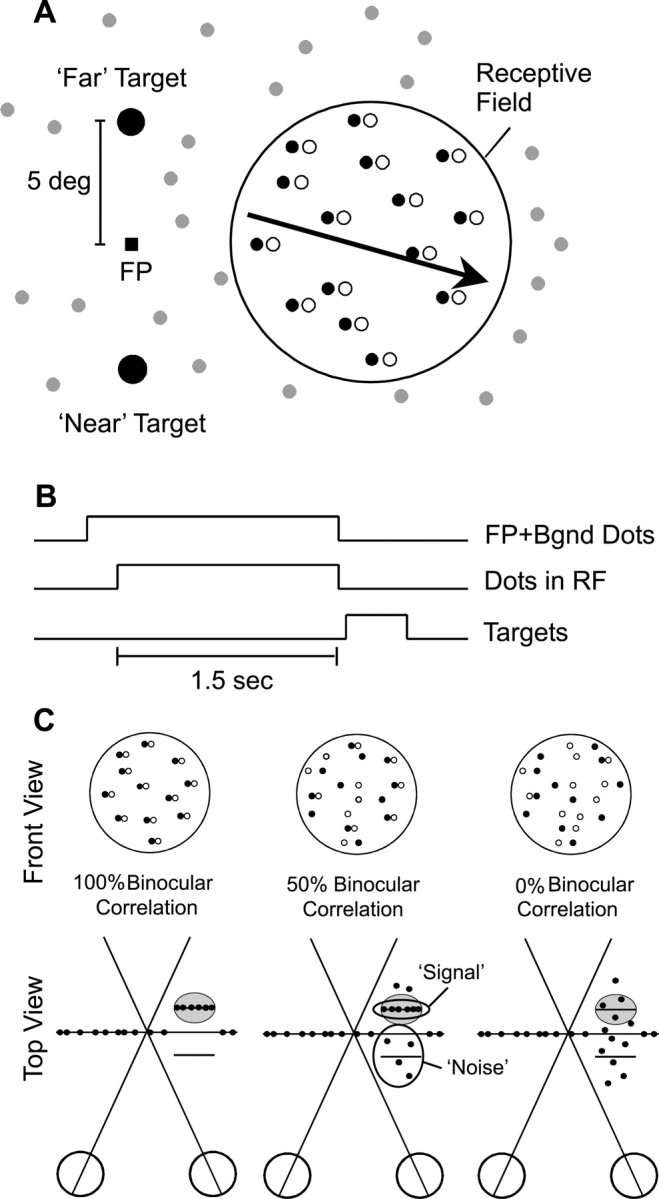Fig. 1.

Depth discrimination task. A, A random dot stereogram was presented within a circular aperture slightly larger than the receptive field (RF) of the neuron, and dots moved at the preferred velocity (arrow) of the neuron. Filled and open dots represent left and right half-images, respectively. Regions of the 40 × 30° screen outside the receptive field were filled with flickering zero-disparity background dots (gray). Saccade targets were located 5° above and below the fixation point, corresponding to far and near choices, respectively. B, Time course of a discrimination trial. The fixation point (FP) first appeared along with the background (Bgnd) dots. After the random dot stereogram was presented for 1.5 sec, the fixation point and dots were extinguished, and two choice targets appeared. Monkeys reported the depth of the stimulus by making a saccade to one of the two targets.C, Manipulation of task difficulty. The strength of the depth signal was adjusted by varying the binocular correlation. At 100% binocular correlation (left) all dots within the receptive field were presented at either the preferred disparity of the neuron (short horizontal line inside gray oval) or the disparity that elicited a minimal response (null disparity). At 50% binocular correlation (middle) one-half of the dots have random disparities, thus forming a 3-D cloud of disparity noise. At 0% correlation (right) all dots are assigned random disparities, making the stimulus ambiguous.
